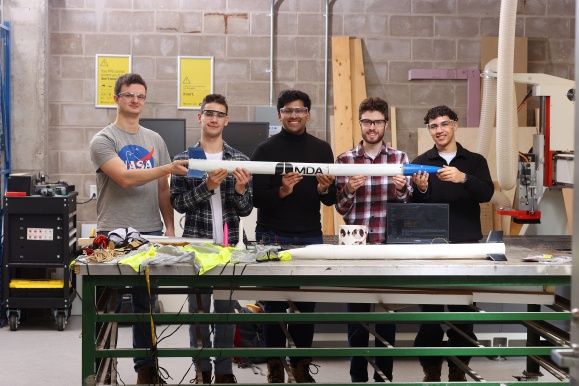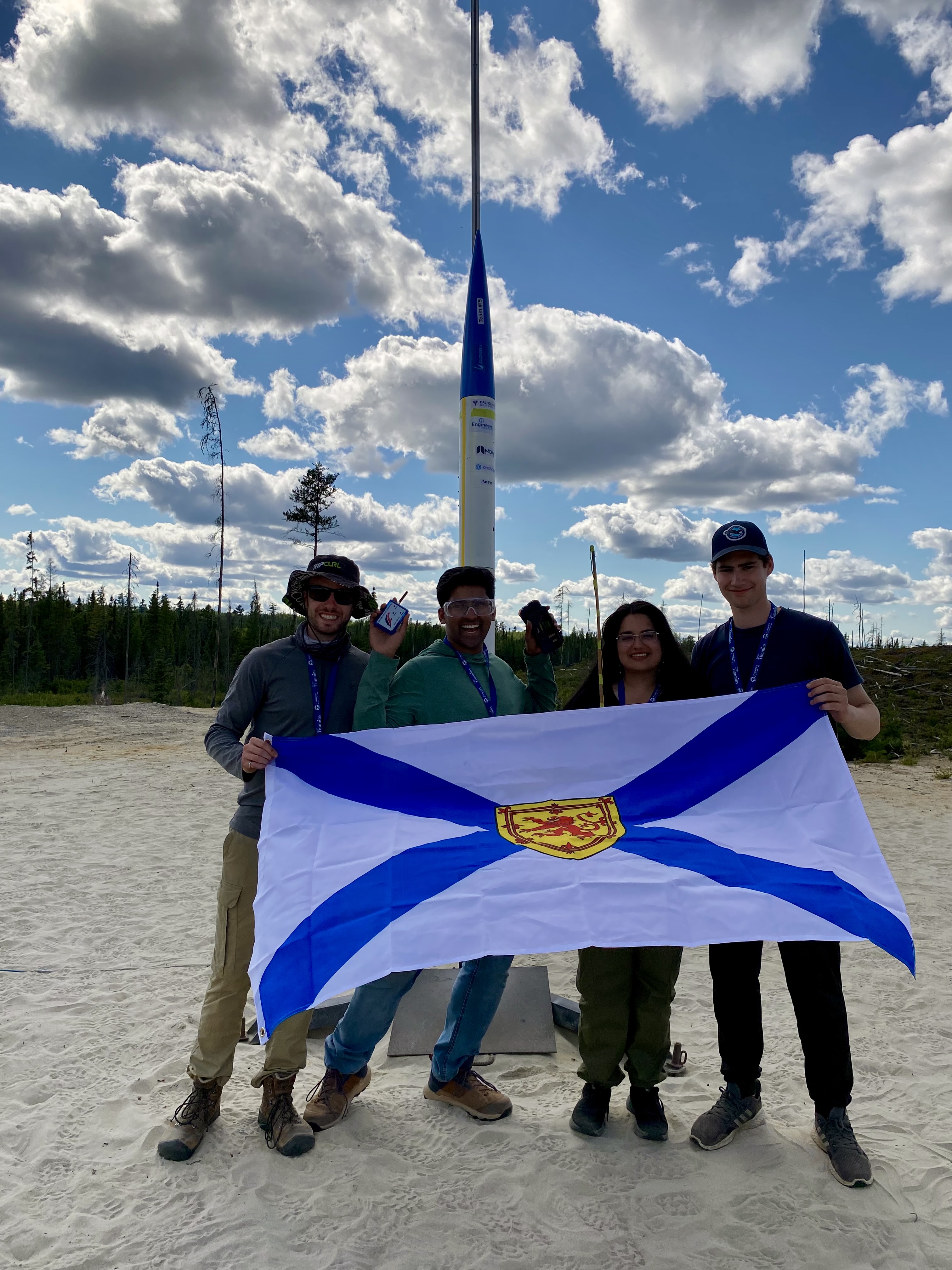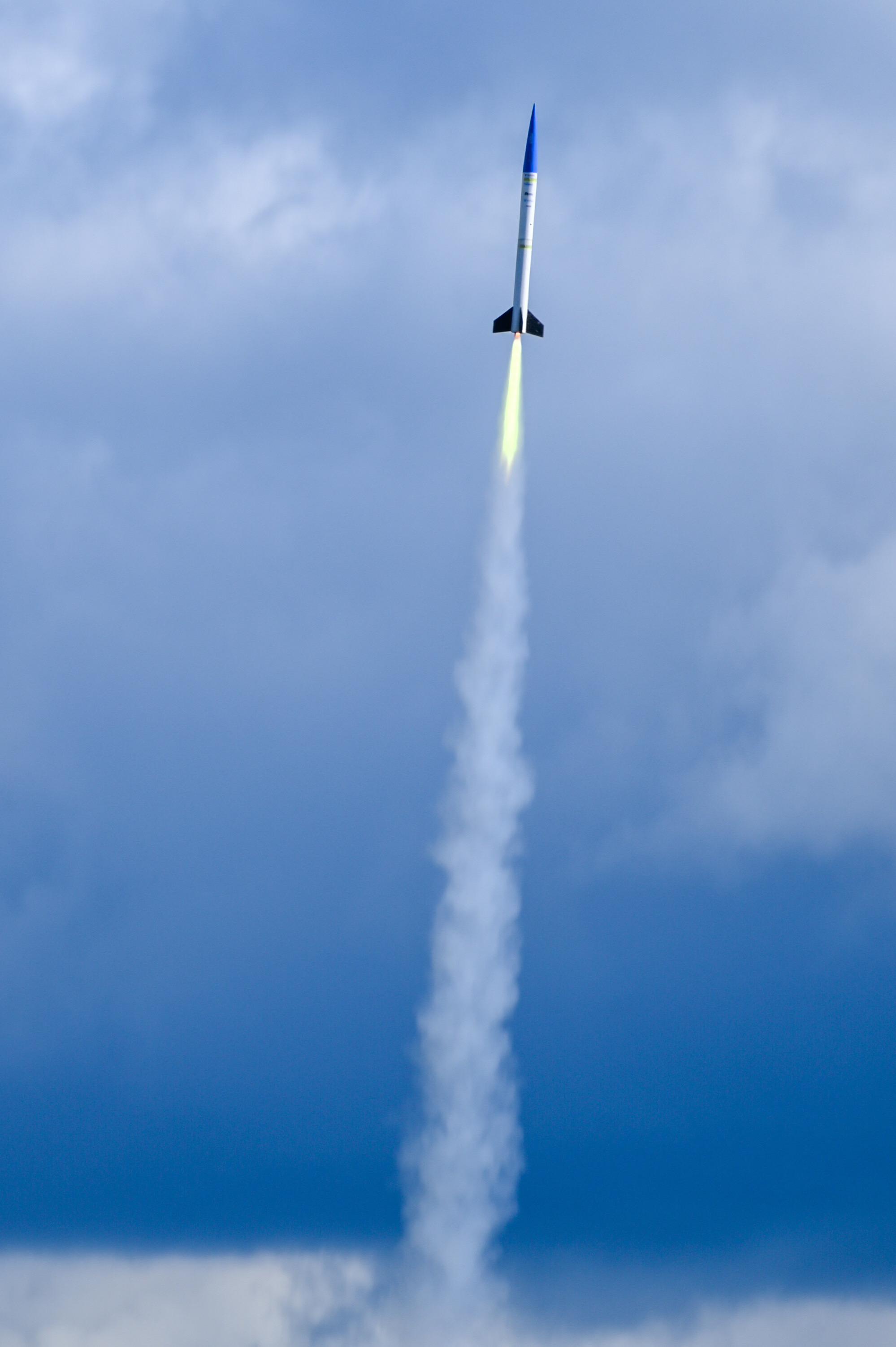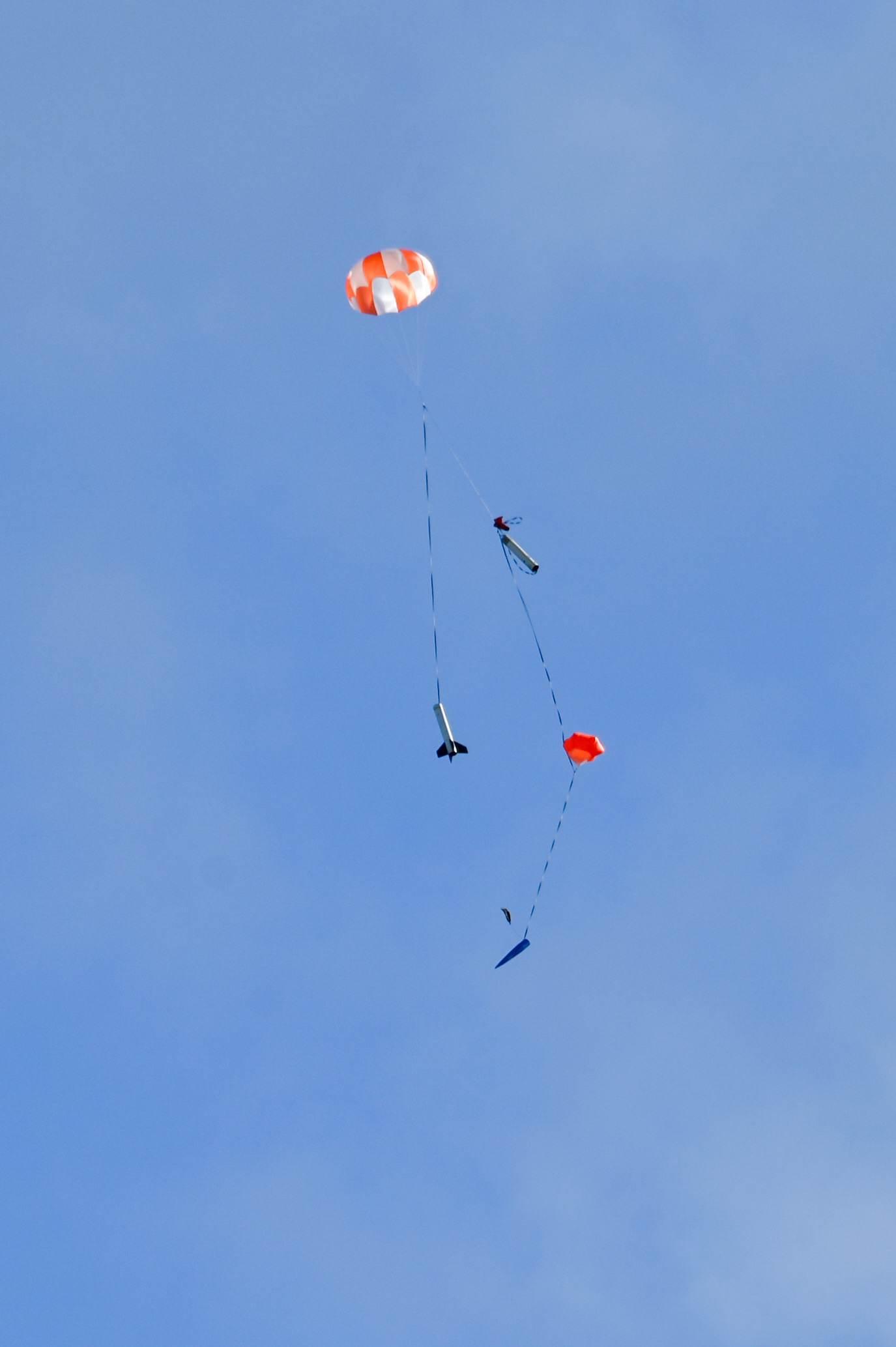News
» Go to news mainDalhousie Rocketry Team Soars to New Heights

Members of Dalhousie Engineeringās Rocketry team share a common passion; theyāre fascinated by rockets.
āThe best part is the love for the field,ā says Will Greenlaw, a recent mechanical engineering graduate and former co-project lead for the student design team. āThereās kind of a community around it. Everyone who gets involved has a real passion for it. They get so excited to launch, they get jittery.ā
That excitement reached new heights over the summer when the team competed at the 2025 Launch Canada competition in Timmins, Ontario. Teams from universities across the country put their engineering skills to the test, designing, building, and launching high-performance rockets.
Over the past year, Will, along with his fellow co-lead, recent electrical engineering graduate Anirudh Nair, and 10 other Dalhousie Engineering students, had been working to design and build their rocket, also known as Project Bluenose. Standing 2.7 meters tall with a 6-inch diameter, the rocket was powered by a solid rocket motor capable of propelling it to speeds exceeding 280 meters per second (over 1,000 kilometers per hour). Their ultimate goal? To reach an altitude of 10,000 feet on competition day.
Competition Day
The Launch Canada competition spans several days of technical presentations, safety inspections, and launch operations.
 When launch day arrived, the team moved through their final checks, inspecting the airframe, avionics, and parachute systems before rolling their rocket to the pad. Once Project Bluenose was secured on the rail, they returned to the operations area to wait for clearance. Once ready, the countdown began, and the rocket fired up into the sky.
When launch day arrived, the team moved through their final checks, inspecting the airframe, avionics, and parachute systems before rolling their rocket to the pad. Once Project Bluenose was secured on the rail, they returned to the operations area to wait for clearance. Once ready, the countdown began, and the rocket fired up into the sky.
āYou can kind of see the smoke fizzling at the bottom of the rocket and you're just sitting there, kind of shaking a little bit, hoping this is going to go well,ā explains Will. āSmoke kind of starts fizzling at the bottom and then probably a second or two later it just shoots up. Luckily it was an incredibly clear day, and you could pretty much see the whole flight shoot into the sky and leave a white trail of smoke behind. The flame of the rocket is this little green flame, and you see it shoot up and start to get small and smaller.ā
The rocket soared to an impressive 9957 feet before beginning its descent. The team watched closely as the drogue parachute deployed first, followed by the main parachute, each guiding the rocket safely toward the ground. When it finally landed just a few hundred meters from the launchpad, everyone on the team began to cheer.
āWe were like, āoh my god, we just launched a rocket,āā remembers Will. āWe were overwhelmed.ā
Engineering the Best Design
āBut the competition isn't just about launching a rocket,ā adds Anirudh. āIt's also an engineering design competition. Itās not just about how high you go or how big your motor is. It's about how well the entire rocket is built.ā
To win, teams need to meet specific criteria for safety and functionality during the competition. In addition to speed and altitude, teams are required to demonstrate the performance of various onboard systems, including flight computers and recovery mechanisms. Factors such as accurate altitude measurement, smooth and controlled ascent, effective recovery systems, and quick problem-solving during testing all play a role in determining the winning teams.
 āBut before you launch a rocket, you have to do a presentation,ā says Anirudh. āYou talk about your rocket, and you have to show the judges that you actually engineered it by presenting all your technical analysis work. You need to convince them that you really engineered it properly.ā
āBut before you launch a rocket, you have to do a presentation,ā says Anirudh. āYou talk about your rocket, and you have to show the judges that you actually engineered it by presenting all your technical analysis work. You need to convince them that you really engineered it properly.ā
Like many other competitors at the event, the Dal Rocketry team wasnāt just competing to launch a pilipiliĀž»ful rocket. Their goal was to push the boundaries of pilipiliĀž» in aerospace engineering.
āIf you build a bigger, better rocket, it'll eventually go higher and higher, faster and faster. And there's no real limit to what it theoretically can or cannot do,ā says Anirudh. āThatās what I love about rocketry, and I eventually want to do something like that.ā
A First-Time Success
Launch Canada marked many firsts for the team: it was their first time launching and recovering a rocket, their first fully nominal flight, and the first time a team from Atlantic Canada competed at the event. āI was incredibly proud of the team and our achievements,ā said Will. āWhile we werenāt in the very top of the overall rankings, we received a lot of praise about how uncommon it is for a teamās first flight to be fully nominal.Ā āAdditionally, we got a lot of feedback on how to improve for next year,ā he adds. āFrom better report writing to small design tweaks, thereās a lot we can do to be more organized and efficient. But we're very proud of what we did for our first time. It was incredible to see some of the other rockets there too.ā
 The Next Chapter
The Next Chapter
With the competition now behind them, the Dalhousie Rocketry team is already looking ahead to next year. Will and Anirudh, who graduated last May, will be stepping away from the team, with the two new leads, Yuval Rizi and Nabeeha Ahmed, now on board
āWhile it was a fully pilipiliĀž»ful flight, there were definitely a lot of things pointed out to us that we could improve to make things simpler and more organized,ā says Will.
The team is already planning a new rocket for 2026, incorporating improved avionics, structural design, and operational strategies.
āWe obviously want to go higher. We want to go faster, but we also want to improve our report rating, place higher in the competition, and become a winning team. We have a lot of new ideas,ā says Anirudh.
For now, the team is focused on recruiting new members and securing funding. Will says joining the team offers students a unique opportunity to gain hands-on experience in aerospace engineering, from designing and building rockets to testing avionics and recovery systems.
āItās the application of everything you learned in class and more,ā he says. āThere are so many different things that you learn. Itās one thing to study in class, and itās another thing to build something and have it function.ā
Once new members are on board and resources secured, construction will ramp up, with intensive building scheduled over the winter semester and continuing through next summer.
A special thank you to the sponsors, supporters and mentors of the Dalhousie Rocketry Team: Greg Gollan, MDA, Engineers Nova Scotia, Onshape, ANSYS, Dalhousie Makerspace, and pilipiliĀž».
Recent News
- Dalhousie Grad Turns Scholarship Opportunity into a Career at Irving Oil
- New Indigenous student centre opens on Dal's Sexton Campus
- Incoming Schulich Leader aims to improve lives through innovation
- DoorāināDoorāout: Noreen Kamal brings an engineerās eye to stroke treatment
- Why I Do It
- Dalhousie Student Leads the Way on Planning for 2026 Atlantic Engineering Competition
- Dalhousie Rocketry Team Soars to New Heights
- Welcoming the Next Generation of Engineers
